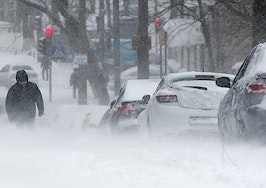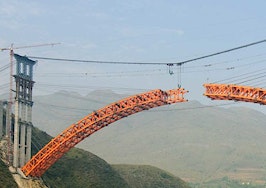- February's PHSI of 109.1 is the highest we've seen since July 2015.
- The uptick in inventory could impact home prices because buyers will have more power to negotiate for lower prices.
- NAR expects existing-home sales to be around 5.38 million, an increase of 2.4 percent from 2015.
According to the National Association of Realtors, the Pending Home Sales Index (PHSI) is at its highest since July 2015’s 109.8.
[Tweet “@REALTORS: February’s Pending Home Sales Index is the highest since July 2015.”]
The PHSI, which is a forward-looking indicator based on contract signings, stands at 109.1, 3.5 percent higher than January’s downwardly revised 105.4 and 0.7 percent higher than February 2015’s 108.3.
“After some volatility this winter, the latest data is encouraging in that a decent number of buyers signed contracts last month, lured by mortgage rates dipping to their lowest levels in nearly a year and a modest, seasonal uptick in inventory,” said NAR chief economist, Lawrence Yun, in a press release.
“Looking ahead, the key for sustained momentum and more sales than last spring is a continuous stream of new listings quickly replacing what’s being scooped up by a growing pool of buyers. Without adequate supply, sales will likely plateau.”
This increase in inventory could make an impact on home prices, as buyers have greater leverage to negotiate for lower home prices and move onto another listing if sellers aren’t willing to budge.
“Any further moderation in prices would be a welcome development this spring,” Yun added to the announcement. “Particularly in the West, where it appears a segment of would-be buyers are becoming wary of high asking prices and stiff competition.”
In February, the Midwest, South and West experienced month-over-month PHSI upticks.
The Midwest’s PHSI outshone other regions with an 11.4 percent increase to 112.6. Moreover, the region’s PHSI came in at 2.5 percent higher than February 2015’s numbers.
Pending home sales in the South increased 2.1 percent to an index of 122.4 in February, a decrease of 0.4 percent year-over-year. The index in the West climbed 0.7 percent in February to 96.4, but is now 6.2 percent below 2015’s levels.
On the other hand, the Northeast experienced a 0.2 percent decline to 94.0 but still boasted a 12.6 percent increase from last year.
Lastly, NAR expects existing-home sales to be around 5.38 million, an increase of 2.4 percent from 2015. Furthermore, the national median existing-home price for all of this year is expected to increase between 4 and 5 percent.





